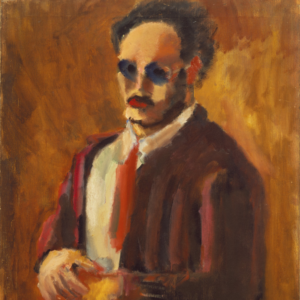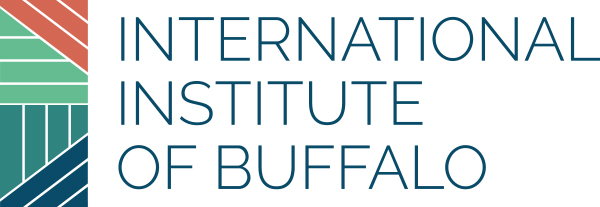
Mark Rothko: Self Portrait
In honor of Jewish American Heritage Month, we recognize the economic, cultural, political, and social contributions of notable immigrants and refugees who’ve helped shape America’s vibrant tapestry. Today, we spotlight Russian American and preeminent abstract artist Mark Rothko.
Born in Russia in 1903, Marcus Rothkowitz was the youngest of four siblings. Due to programs targeting Jews in neighboring communities, his father, a pharmacist, resettled the family in Oregon when Mark was just ten years old. Fears of Nazi influence in the U.S. led him to adopt the Anglicized name of Mark Rothko in 1940. As an exceptional student, Rothko’s academic pursuits propelled him to attend Yale University, where he studied liberal arts and science, albeit he left before graduating. He later moved to New York City and studied at the Arts Students League, where he taught children’s drawing at the Center Academy of the Brooklyn Jewish Center.
In the 1940s, Rothko and a handful of other artists established a niche for abstract art. The group, known as the Abstract Expressionists, was built off the wings of Rothko’s manifesto, in which he expressed his preference for “the simple expression of the complex thought.” The abstract works did not depict the visible world but used shapes, colors, lines, and forms to create compositions that evoke emotions or sensations. Within the next decade, Rothko would become a specialized abstract artist. Preferring a large, vertical canvas, he used a seemingly endless variety of colors to elicit varying moods; his thin, layered style makes colors seemingly radiate from within. Referred to as “Colorfield Painting,” his larger works are meant to be viewed from close proximity so viewers feel submerged. In the late 1940s, Rothko taught at the California School of Fine Arts in San Francisco.
In the 1960s, Rothko delved into using darker colors in his paintings. He completed several commissions for large-scale public works, including a collection of murals for the Four Seasons restaurant in New York.
Mark Rothko was diagnosed with depression and heart issues, including myocardial infarction in the late 1960s before he passed in 1970.
Did you know that you can view Mark Rothko’s art locally? Click here for more information on Mark Rothko’s work displayed at the Buffalo AKG Art Museum.
Others we are celebrating in honor of Jewish American Heritage Month:
- Anzia Yezierska, novelist.
- Elie Wiesel, Nobel Laureate
